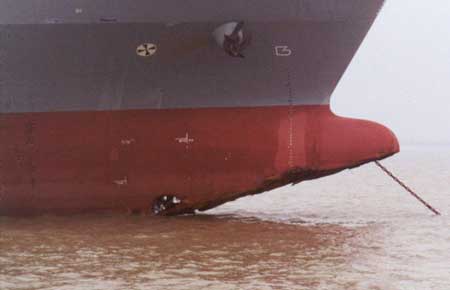The 2nd officer returned to the Bridge at about 0215. He stood in front of the port radar to the left side of
the A/B who was at the wheel. He noted that vessel was steering 145, Engines were on Full Ahead and
speed was about 15 knots. He also observed the Master on the phone standing only a few feet away to the
right side of the A/B informing engine room to increase to sea speed. At this time he asked the Master if he
should alter to Port. Master did not reply.
2nd Officer presumed that Master had detected some other target and was hence delaying the alteration.
2nd officer then looked at the Starboard Radar and did not see any other target, he again asked Master if he
should alter to Port.
Master did not reply, instead he picked up the telephone and started talking to a shore technician who was
sailing onboard.
2nd Officer then went to the chart room and plotted the position which showed that vessel was headed
straight for an island which was only 7 cables away.
He saw Master still on the phone and again asked Master shall I alter to Port. Master looked up and said
yes. 2nd officer ordered port 5 on the helm.
Master then looked at the radar saw the danger and shouted hard port.
Helm was given but it was too late and a few seconds later at 0223 there was a loud thud and vessel's
speed dropped from 15 knots to zero.

